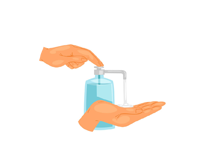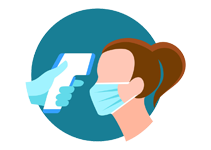Pegaspargase
Uses of Pegaspargase
- Treatment of acute lymphoblastic leukemia (ALL)
- Used in patients allergic to native L-asparaginase
- Included as part of chemotherapy regimens like CALGB, BFM, or COG protocols
How Pegaspargase Works
Pegaspargase works by breaking down asparagine in the blood. Leukemia cells need asparagine to grow and survive but cannot make it themselves. By eliminating this amino acid, Pegaspargase starves and kills the cancer cells without affecting normal cells that can produce their own asparagine.
Benefits of Pegaspargase
- Effective treatment for ALL
- Longer duration of action due to pegylation
- Fewer allergic reactions compared to standard asparaginase
- Reduced dosing frequency (usually once every 2 weeks)
- Improves survival outcomes when used with other chemotherapy agents
How to Take Pegaspargase
Pegaspargase is given as an intravenous (IV) infusion or intramuscular (IM) injection by a trained medical professional in a hospital or cancer treatment center. Dosing is based on body surface area and specific treatment protocols. Follow your oncologist `s instructions closely.
Type of Dosage Available
- Intravenous (IV) injection
- Intramuscular (IM) injection
Side Effects of Pegaspargase
- Allergic reactions (rash, itching, fever)
- Pancreatitis (inflammation of the pancreas)
- Liver dysfunction
- Blood clotting disorders
- Nausea and vomiting
- Low blood sugar or high blood sugar
Safety Advice
- Only use under supervision of a qualified oncologist
- Monitor liver function, pancreatic enzymes, and clotting profile regularly
- Inform your doctor of any known allergies
- Avoid use in patients with a history of pancreatitis or severe allergic reactions to asparaginase
- Tell your doctor if you are pregnant or breastfeeding
Frequently Asked Questions (FAQs)
Q: What is Pegaspargase used for?
A: Pegaspargase is used to treat acute lymphoblastic leukemia (ALL) as part of combination chemotherapy.
Q: How is Pegaspargase administered?
A: It is given by IV infusion or intramuscular injection under hospital supervision.
Q: What are common side effects of Pegaspargase?
A: Side effects include allergic reactions, liver issues, pancreatitis, and blood sugar changes.
Q: Can Pegaspargase be used in children?
A: Yes, it is commonly used in pediatric ALL treatment protocols under medical guidance.
Q: Is Pegaspargase safe during pregnancy?
A: It should be avoided during pregnancy unless deemed absolutely necessary by your doctor.
Medicine Not Available for Pegaspargase
Uses of Pegaspargase
- Treatment of acute lymphoblastic leukemia (ALL)
- Used in patients allergic to native L-asparaginase
- Included as part of chemotherapy regimens like CALGB, BFM, or COG protocols
How Pegaspargase Works
Pegaspargase works by breaking down asparagine in the blood. Leukemia cells need asparagine to grow and survive but cannot make it themselves. By eliminating this amino acid, Pegaspargase starves and kills the cancer cells without affecting normal cells that can produce their own asparagine.
Benefits of Pegaspargase
- Effective treatment for ALL
- Longer duration of action due to pegylation
- Fewer allergic reactions compared to standard asparaginase
- Reduced dosing frequency (usually once every 2 weeks)
- Improves survival outcomes when used with other chemotherapy agents
How to Take Pegaspargase
Pegaspargase is given as an intravenous (IV) infusion or intramuscular (IM) injection by a trained medical professional in a hospital or cancer treatment center. Dosing is based on body surface area and specific treatment protocols. Follow your oncologist `s instructions closely.
Type of Dosage Available
- Intravenous (IV) injection
- Intramuscular (IM) injection
Side Effects of Pegaspargase
- Allergic reactions (rash, itching, fever)
- Pancreatitis (inflammation of the pancreas)
- Liver dysfunction
- Blood clotting disorders
- Nausea and vomiting
- Low blood sugar or high blood sugar
Safety Advice
- Only use under supervision of a qualified oncologist
- Monitor liver function, pancreatic enzymes, and clotting profile regularly
- Inform your doctor of any known allergies
- Avoid use in patients with a history of pancreatitis or severe allergic reactions to asparaginase
- Tell your doctor if you are pregnant or breastfeeding
Frequently Asked Questions (FAQs)
Q: What is Pegaspargase used for?
A: Pegaspargase is used to treat acute lymphoblastic leukemia (ALL) as part of combination chemotherapy.
Q: How is Pegaspargase administered?
A: It is given by IV infusion or intramuscular injection under hospital supervision.
Q: What are common side effects of Pegaspargase?
A: Side effects include allergic reactions, liver issues, pancreatitis, and blood sugar changes.
Q: Can Pegaspargase be used in children?
A: Yes, it is commonly used in pediatric ALL treatment protocols under medical guidance.
Q: Is Pegaspargase safe during pregnancy?
A: It should be avoided during pregnancy unless deemed absolutely necessary by your doctor.
Download India's most affordable pharmacy app
- Compare with medicine prices
- Save upto 90% on your medicine bills

Temperature Controlled storage and delivery

Regular Sanitization

Disinfected Packaging









 Added!
Added!